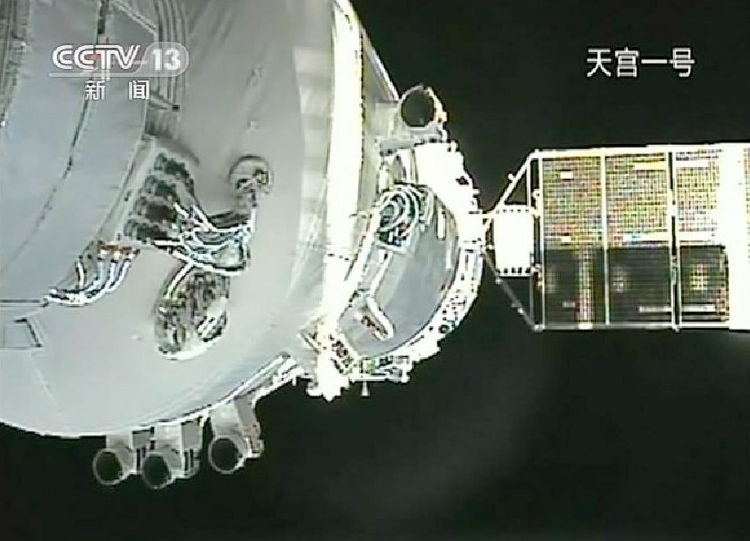Something I like about the Internet is how quickly people will update you when information is out of date or incorrect. In this case, I have been following what sources I could on Tiangong-1 when someone on twitter alerted me that it had already been confirmed to have re-entered, in this case, at 5:16PM Pacific Daylight Time, or 8:16 PM Central Daylight Time for me.
UPDATE: #JFSCC confirmed #Tiangong1 reentered the atmosphere over the southern Pacific Ocean at ~5:16 p.m. (PST) April 1. For details see https://t.co/OzZXgaEX0W @US_Stratcom @usairforce @AFSpaceCC @30thSpaceWing @PeteAFB @SpaceTrackOrg pic.twitter.com/KVljDALqzi
— 18th Space Defense Squadron (@18thSDS) April 2, 2018
So, the entry point was just before South America, over the Southern Pacific Ocean. Not too far away from where the estimates earlier in the day put things – just this time before the Continent, and not after.
Of course, being mostly an empty tube with equipment attached, Tiangong-1 would have broken apart during re-entry and disintegrated, with only the most dense components, like docking systems or engines, surviving to the ocean surface, sinking down never to be seen again. Thankfully, this means absolutely no damage to any person, or property.
China’s first space station is gone, and that does somewhat sadden me, as someone who loves space travel and enjoys other nations really getting into things (I actually really like what China has done in space so far, and I think they get almost no respect on a whole) but at the same rate this is what happens – things can’t last forever, especially not out of control in low Earth orbit.
Progress will continue – Tiangong-2 has provided its own improvements from what Tiangong-1 taught China on operations in space, and hopefully it will be de-orbited safely – it’s still under control, from what I understand, so there is at least that going for it. China is planning their own modular space station in line with the design ethos of MIR or the International Space Station, and to that end Tiangong-1 and 2 are stepping stones to their own orbiting research platform.
This isn’t the first time a space station has had this happen – several old Soviet era Salyut stations met with similar uncontrolled re-entries, and as I’ve mentioned before Skylab was infamous for its semi-controlled re-entry in 79.
Still, what amazed me was how many people had absolutely no clue about any details surrounding Tiangong-1. In fact, it amazes me enough that I’m going to have a follow up to this article where I cover just a few things I saw as user comments on articles regarding the now-gone space station.

Tiangong-1 during docking operations in 2011
